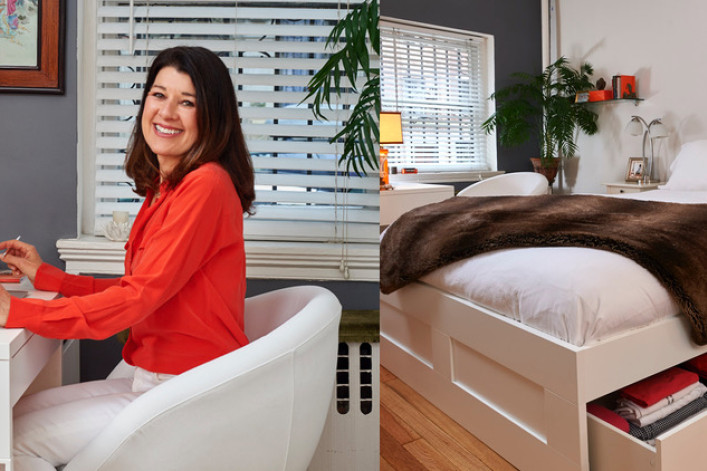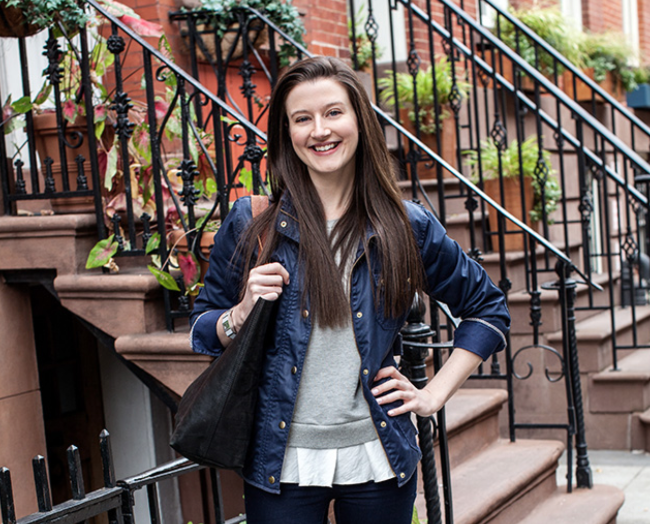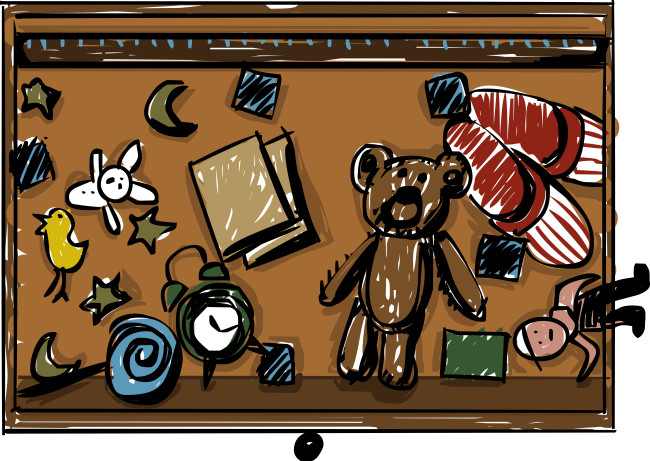5 tips from a personal organizer to help you clear out your clutter once and for all
If you secretly skipped the whole "spring cleaning" thing this year, you're certainly not alone. And even if you did do a big overhaul a few months back, small spaces (i.e. cramped New York apartments) can be tough to keep in check, and it's entirely possible the mess has already worked its way back into your living space. Truly, it happens to the best of us.
And even if you're not ready to commit to a full Marie Kondo-esque overhaul, there are certain strategies you can implement in your day-to-day that'll make a world of difference in keeping you in charge of your clutter, rather than the other way around. For expert wisdom, we turned to personal organizing guru Meryl Starr, who has decades of experience helping New Yorkers in even the smallest apartments get their spaces in order. Below, five straightforward strategies you can start implementing this weekend:
Get rid of as much as possible—and resist the urge to buy more stuff
You knew this one was coming: first and foremost, it pays to be a little ruthless when it comes to tossing (or donating) clothes, appliances, books, and other household items you're not using.
"Look at your lifestyle and see what you're really using," Starr advises. "The less you have the better you feel."
And on the flip side, beware the temptation to buy extra gadgets in hopes that they'll magically keep everything in order. "The first thing everyone wants to do is buy products," says Starr. "It's difficult for people to get rid of things, so it's easier to purchase and to buy more thinking that's going to be the solution to the problem. But it doesn't help."
Instead, says Starr, get rid of as much as possible, and then—only then!—is it time to consider extra storage options or organizing tools. "I had a client recently where we decluttered, and then eventually realized some shoe boxes would help keep the closet organized," she notes.
"Paring down and purging—that's the key to getting yourself organized," Starr adds. "We only want to keep the things that we're using, that are meaningful, that are working in our lives. Everything else should go."
Tame your tangle of plastic bags
This is a relatively easy one if you need a small project to get you started: It's time to deal with that mess of plastic bags you've been saving to re-use eventually. (Everyone has a pile of these somewhere, right?)
"I've had several clients that keep the plastic bags from Duane Reade or CVS or whever and collect and collect thinking they're going to use them, but there's like three dozen, and it's not necessary," says Starr.
Instead, commit to a firm limit on the number of bags you keep sitting around, and store them in a small container to keep them from mysteriously expanding to take up an entire drawer or cabinet. "What you can do is take a gallon-sized Ziploc bag and just keep enough that will fit in that bag," says Starr. "That way, it's neat, they're compact, and you can fit around 15 bags in there. It's all in once place and not taking up space."
Create a system in your closet and cabinets
As much as possible, it helps to develop a system to keep your closets, cabinets, and other storage areas from simply becoming piles of junk that are just hidden behind a closed door.
"In the closet, I love keeping like items together," suggests Starr. "Pants should be together, shirts together, dresses together." From there, she suggests grouping the items by color, going from light to dark. "When it's like that, you can focus," she tells us. "You need a pair of pants, you go right to the pants section. And it's easier to look at to the eye. If something looks good, it feels good."
Similarly, in your kitchen drawers, stack items within each other wherever possible, and once again, be ruthless in your editing. "As far as plastic containers go, they can be stacked within each other from small to large, but also, every container should have a lid," says Starr. "If it doesn't have a lid, get rid of it. And how many plastic containers from your takeout are you really using? Do you really need more than a week's worth of tupperware or containers?" Unless you're an avid chef who needs extra storage on hand to freeze large batches of things at a time, the answer is probably 'no.'
Get creative in adding extra storage
While it shouldn't be the first step you take—again, getting rid of things should always be the top priority—later in the game, it can help to add some strategic storage into the mix.
"Hooks are fabulous for a closet—you can hang necklaces, belts, ties, your outfit for the next morning," says Starr. She also suggests under-the-bed storage for items like linens and off-season clothing, and dual-purpose pieces that can function as both furniture and storage.
"You can add seating to a room that has storage, like a cube or an ottoman," Starr notes. And when in doubt, go verticle, adding extra shelving higher up in your closets, or on the walls.
Start small and work your way up
While a true overhaul can be a daunting undertaking, if that all seems like too much, don't be afraid to take baby steps.
"What people wind up doing is looking at the whole apartment, the whole house, and it gets extremely overhwelming," says Starr. "Instead, look at one closet, one drawer, and go through that and get rid of the things you no longer want or need. The energy changes when we do that, and gives you the incentive to keep going."
And if, for instance, you've got years worth of newspapers or unread New Yorkers piled up around the house, it's OK if you're not quite ready to toss the whole bunch of them in one go. "Start by saving just least year's, if you have years and years worth," says Starr.
"It's a process—you can't expect people to all of a sudden just throw everything out, it doesn't really work that way," she adds. "But if it's giving you that feeling like 'ugh,' that's telling you that you don't really need it, and should get rid of it."
You Might Also Like


























